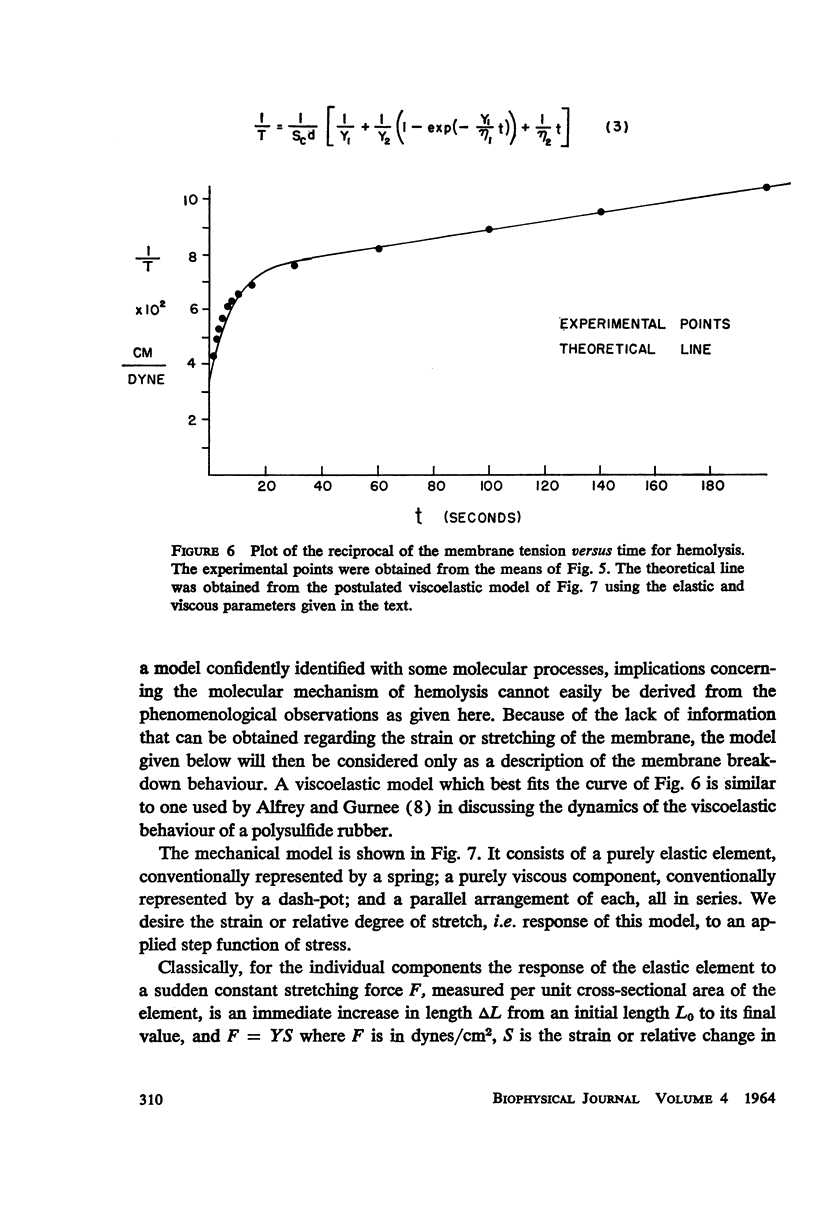Abstract
A technique is described for measuring the stress required to rupture the red cell membrane. It requires a measure of the pressure and time to suck a cell into a micropipette. If a long tongue is pulled into a micropipette, the membrane spontaneously collapses on itself, as does a cylinder of fluid of length equal to its diameter, and a small refractile globule and a swollen red cell are produced. If the cells are hypotonically swollen enough, they cannot afford enough area for a long tongue to move into the pipette and when stressed for a time, hemolyse and disappear into the pipette. Calculation of membrane tension shows that the membrane can withstand a wide variety of tensions, up to a maximum of 20 dynes/cm for short periods of time, but even at much lower stresses the membrane eventually either ruptures, and the cell hemolyses, or relaxes; there does not appear to be a yield stress. This observation and the kinetics of the cell breakdown lead to a viscoelastic model of the cell membrane. The membrane substance has a Young's modulus of approximately 106 to 108 dynes/cm2 and a viscosity of 107 to 1010 poises. This confirms and extends the viscoelastic model proposed by Katchalsky et al. (3).
Full text
PDF













Images in this article
Selected References
These references are in PubMed. This may not be the complete list of references from this article.
- RAND R. P., BURTON A. C. Area and volume changes in hemolysis of single erythrocytes. J Cell Comp Physiol. 1963 Jun;61:245–253. doi: 10.1002/jcp.1030610306. [DOI] [PubMed] [Google Scholar]
- RAND R. P., BURTON A. C. MECHANICAL PROPERTIES OF THE RED CELL MEMBRANE. I. MEMBRANE STIFFNESS AND INTRACELLULAR PRESSURE. Biophys J. 1964 Mar;4:115–135. doi: 10.1016/s0006-3495(64)86773-4. [DOI] [PMC free article] [PubMed] [Google Scholar]



